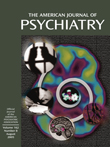Clozapine-Induced Allergic Vasculitis
To the Editor: Recently, a patient in our institution developed palpable purpura shortly after initiation of the antipsychotic clozapine. Palpable purpura is an indication of inflammatory hemorrhage and is highly suggestive of allergic vasculitis. A literature search revealed no prior reported cases. We are reporting this case of clozapine-induced allergic vasculitis to promote a swifter diagnosis and treatment of this rare complication.
Mr. A was a 59-year-old man with a history of paranoid schizophrenia, deafness, hypothyroidism, and tardive dyskinesia. Haloperidol was being discontinued and clozapine initiated because of persistent extrapyramidal symptoms, tardive dyskinesia, and treatment-resistant psychotic symptoms. Clozapine had been introduced 17 days earlier and was being slowly titrated upward. Besides haloperidol, his other medications included benztropine, divalproex sodium, lorazepam, trazodone, and levothyroxine. When the total dose of clozapine was 137.5 mg/day, a rash developed on his legs. The rash was a confluent, nonblanching, erythematous, elevated patch consistent with a palpable purpura. It continued to spread up his lower extremities but never involved his palms or soles. He was afebrile with stable vital signs and had a benign examination otherwise. Aside from the clozapine, treatment with all other medications was longer than 2 months, with haloperidol, benztropine, and divalproex sodium having been administered for more than 10 years.
The initial differential diagnosis included Rocky Mountain spotted fever, Churg-Strauss syndrome, Wegener’s granulomatosis, microscopic polyarteritis, mixed cryoglobulinemia, and Henoch-Schönlein purpura. Mr. A was empirically administered doxycycline in case of Rocky Mountain spotted fever, and his divalproex sodium and clozapine doses were held steady. Rocky Mountain spotted fever was ruled out by serology and by the fact that Mr. A had been indoors (hospitalized) for the last 2 months. Churg-Strauss syndrome was unlikely because he did not have a history of asthma or eosinophilia. The results of urine and blood cultures and serologies (CBC, liver function tests, creatine kinase, erythrocyte sedimentation rate) were all unremarkable. He was transferred to a tertiary care center for further evaluation. Mr. A was managed conservatively without steroids and had further serologies (serum cryoglobulins, complement C3, complement C4, hepatitis C, and antineutrophil cytoplasmic antibodies studies) whose results were negative. A punch biopsy of his skin revealed perivascular neutrophilic infiltrate with extravasation of red blood cells, suggestive of early leukocytoclastic vasculitis.
The diagnosis of allergic vasculitis was made because of Mr. A’s age, recent medication adjustments, and the isolated skin involvement (1). A closer review of his medications revealed that clozapine was the only new medication in the last 2 months. He improved with conservative management, and it was decided not to rechallenge him with clozapine.
Clozapine is the drug of choice for schizophrenia patients with persistent residual symptoms. Clozapine-induced allergic vasculitis is a rare but serious complication that should be added to the adverse reactions to clozapine therapy. We hope that this case will promote awareness and expedite diagnosis and treatment of this adverse reaction.
1. Michel BA, Hunder GG, Bloch DA, Calabrese LH: Hypersensitivity vasculitis and Henoch-Schönlein purpura: a comparison between the 2 disorders. J Rheumatol 1992; 19:721–728Medline, Google Scholar



